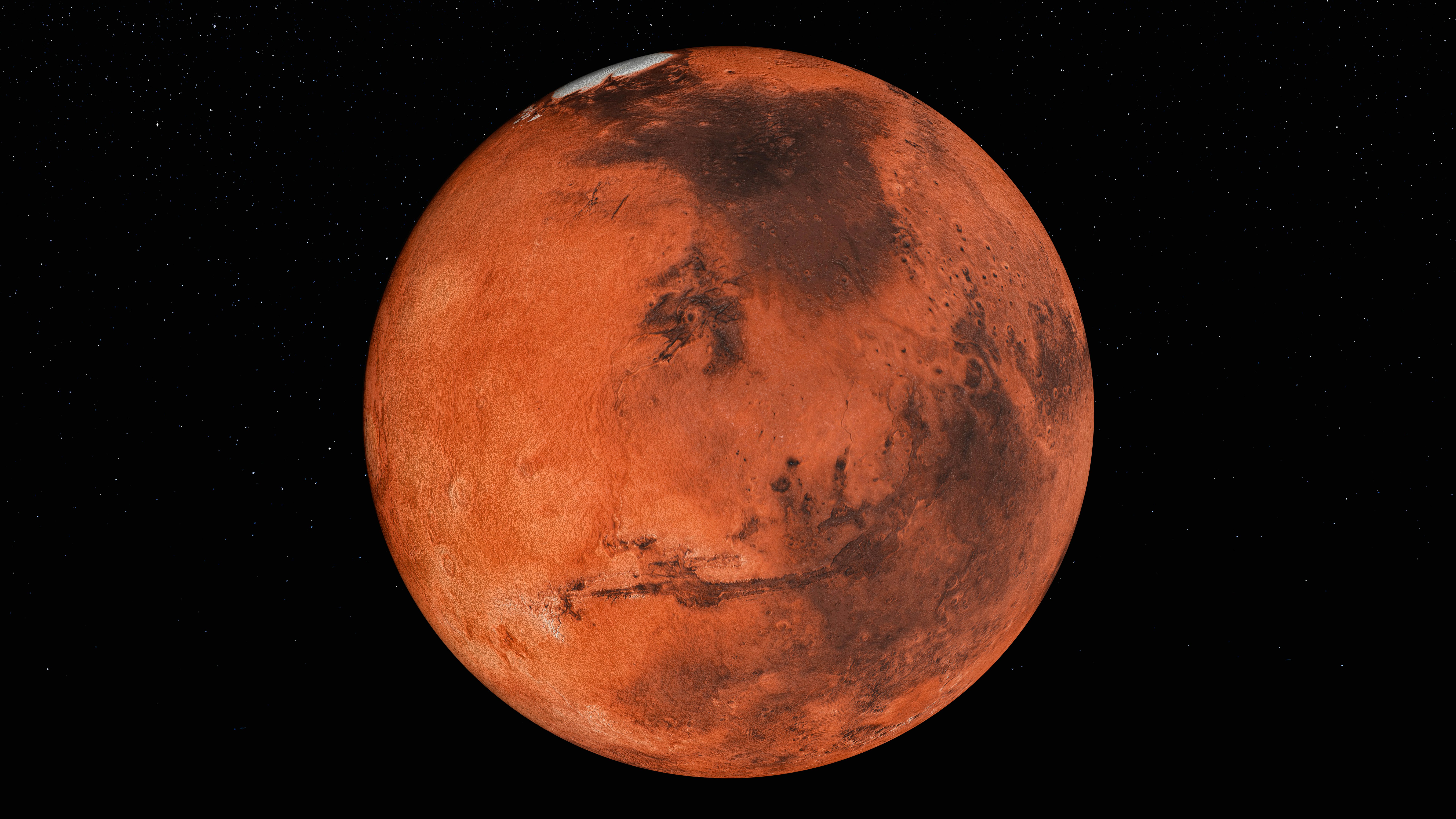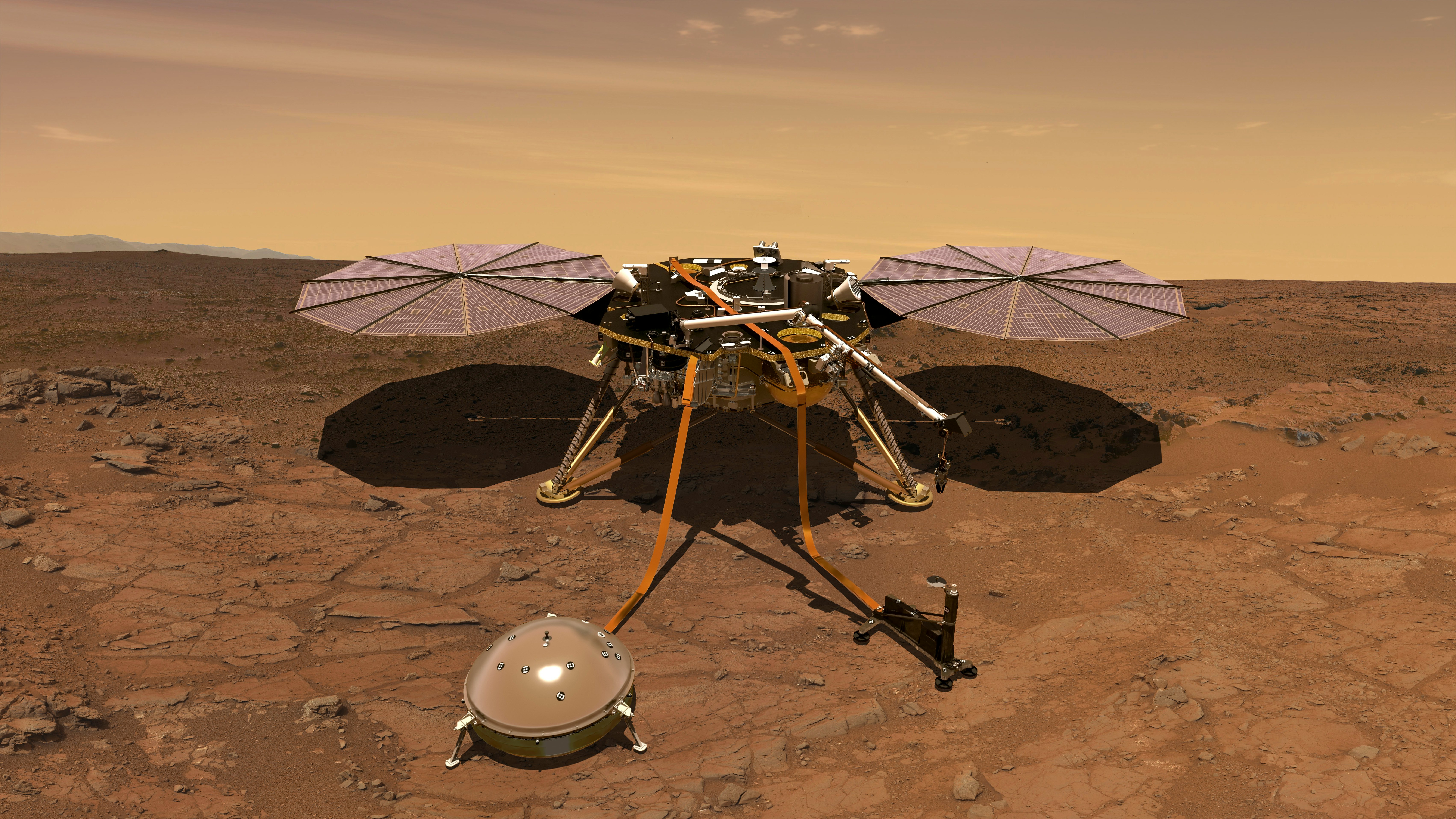
Before Martian dust blanketed the solar panels of NASA’s InSight lander and brought about its end, the robotic mission felt two seismic events passing through the planet’s liquid metal core.
Seismologist Jessica Irving wants to understand what exists beneath the surfaces of Earth and Mars. In a new study published Monday in Proceedings of the National Academy of Sciences (PNAS), she led an international effort to better understand the Martian core with data from InSight, which arrived on the Red Planet in 2018 to listen for tremors, known as marsquakes.
Irving, who is based at the University of Bristol in the UK, worked with experts across the world, including members of the InSight team at NASA’s Jet Propulsion Laboratory (JPL) in Pasadena, California. Together, they analyzed the various seismic waves, separately and together, to better understand the characteristics of Mars' core. They became the first to detect seismic waves that had pierced through the core of Mars.
Seismic waves carry crucial information about what exists deep down where robots and humans cannot voyage. InSight’s original mission was meant to last a single Mars year (roughly two Earth years). But it received an extension. It was during this time, well past InSight’s 900th Mars day (or sol), that the lander collected faint data from two sources that had traveled along curved and ricocheted paths inside the planet from one hefty marsquake and one meteorite strike on the other side.

“We were really fortunate late on in the mission, in the extended mission... to get these two seismic signals — one meteorite impact, and one marsquake on the far side of the planet — and we’ve used those two things to give us some data to work out what’s going on in Mars’ liquid metal heart,” Irving tells Inverse.
The late timing of the discovery played to the scientists’ advantage. By then, JPL researchers were quite familiar with InSight’s wave readings. They had ways to tackle the two newly recorded seismic events that had the farthest-ever origins from InSight by a significant margin.
Waiting for what the planet gives you
“You can’t make a quake happen. You have to just wait for what the planet has to give you. And in this case, it took a lot of time before Mars wanted to give us some signals that would go all the way through the planet,” Irving says.
“You can’t make a quake happen. You have to just wait for what the planet has to give you.”
The marsquake and meteorite hit happened well before the end of the InSight mission, but when the lander was already low on power, around late summer 2021.
Former InSight project scientist Mark Panning says that seismic waves are a lot like sound waves. It’s the same physics but more complicated in solids than in gas.
The first event was a rumble generated by Mars, perhaps from volcanic activity deep in the crust. Irving described the marsquake a bit like the moderate earthquakes that appear far away from where our planet’s tectonic plates meet. (Mars’ crust isn’t broken up like Earth’s, so tremors manifest differently.) The second event was a meteorite strike. NASA’s Mars Reconnaissance Orbiter noticed the fresh crater and communicated its location to InSight.

These events emitted two different waves. One is a P wave, which is the common contract-and-release wave that you see move along a slinky when you squeeze the coils at one end. The other is an S wave, the wiggle that appears when a slinky is plucked perpendicular to its direction. Each wave has different strengths and velocities, and they also move differently through the center of a planet.
Both seismic events created a P wave that ricocheted off the inward-facing side of Mars’ surface and then reached InSight. These are called PP waves. They hinted at the existence of S waves that would have actually traveled through the core. Called SKS waves, they would hold information about the core’s size and composition. But these elusive waves would be faint once they reached InSight.
“We’ve seen seismic waves traveling to the core, but it is easier to see energy just reflected as if it were the surface of a swimming pool,” Irving says.
Irving and Panning say that scientists have many educated guesses about what exists below Mars’ surface and the temperatures they experience with known pressure values, which all inform how fast these waves should travel through the planet.
This velocity then gives an idea about where the event should have taken place. It’s a dance between models and data. And it’s why the meteorite strike was a blessing — the orbiter knew exactly where it happened. Its crater validated where InSight’s team modeled the event as having originated and made them more confident about the estimated origin of the organic marsquake.
Their locations on the other side of the planet excited Irving, Panning says, because their locations mean that InSight may have heard the seismic waves interacting with the core. The strength of both events meant that there was a chance the waves didn’t die along their curved SKS paths before exiting the other side of the planet.
“This was not easy, to pull out these signals. But once we have them, this is the first time we see energy that goes all the way through the core, and it gives us direct information on the properties of this core. Before, all we knew was that it was liquid, and it caused waves to bounce off of it. Because that’s all we could observe. This is a smaller signal, and you need more distant events, and we only had a couple of events at a distance that was enough to see this and big enough that we could see it,” Panning says.
Irving echoes the sentiment. “Mars is actually quite a noisy place for seismology because the wind makes everything shake,” she says. “And so it’s possible that some little quakes on the far side of Mars that were sending tiny bits of energy through the core, and we just couldn’t hear them.”
Voila, here is Mars’ heart
The new paper confirms the work of earlier research, which suggests the Martian core is “hefty,” Irving says, though she also shared that the new work shows it’s slightly smaller than the initial projection.
Models helped scientists see how “hard it is to squish” the core, a property known as compressibility. This reveals clues about what’s inside “the heart of another planet that nobody has ever stood on,” Irving says.
“So it [the core] is still pretty hefty, and it’s still got a lot of non-iron elements in it. So roughly speaking, we think a fifth of the core isn’t iron. It's oxygen and sulfur, carbon and hydrogen. It’s the things you would use with iron on Earth to make different alloys. If you are a person who wanted to make really bad steel, you might think about these elements,” Irving says.
Knowing what exists crammed deep inside Mars could refine our understanding of how the planet formed to get that matter in there, Panning says.
Why it matters
“There is a huge joy in being able to understand our Universe,” Irving says.
Seismology can only tell you what a planet looks like today, she says. But seismic data can help “build compelling stories” about how Mars and the Solar System have formed and changed in the last 4.5 billion years.
In the case of Earth, which has a liquid outer core and solid inner core, the planet’s heart fuels a magnetic field that can act as a protective shield. Mars has some magnetic fields on its surface, and scientists think it once had a planet-sized magnetic field. Measurements about the core can help reveal why its liquid metal stopped the motion that generated the field.
What’s next
InSight cannot generate energy from its dirty solar panels anymore. But Irving offers up that a highly-unlikely remedy by way of a dust devil could wipe the panels clean and revive the forlorn lander.
But InSight is alive and well in its mission data, which is available to anyone willing to take a peek. “I’m sure we’ll be looking at InSight data for decades to come,” Irving said.







